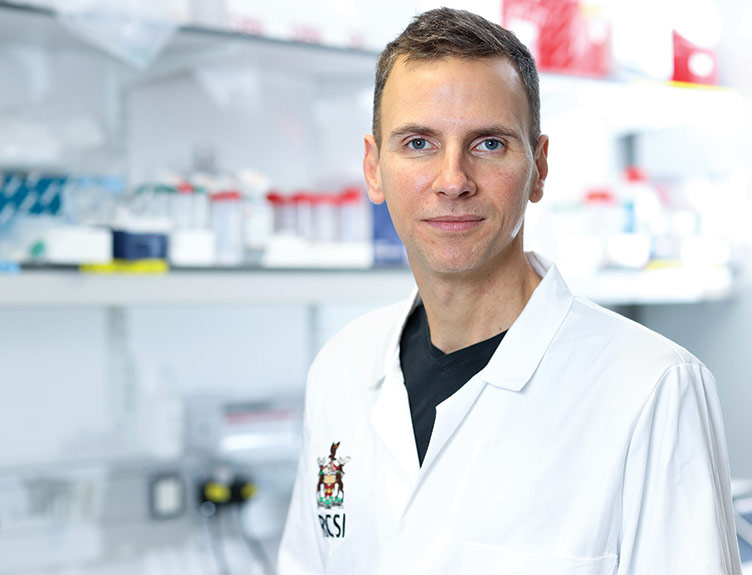RCSI neuroscientists identify new gene in cause of epilepsy

New research conducted by neuroscientists from RCSI published in Nature Medicine has identified a new gene involved in epilepsy and could potentially provide a new treatment option for patients with epilepsy.
The research focussed on a new class of gene called a ‘microRNA' which controls protein production inside cells. The research looked in detail at one particular microRNA called ‘microRNA-134' and found that levels of microRNA-134 are much higher in the part of the brain that causes seizures in patients with epilepsy.
By using a new type of drug-like molecule called an antagomir which locks onto the ‘microRNA-134' and removes it from the brain cell, the researchers found they could prevent epileptic seizures from occurring.
Professor David Henshall, Department of Physiology & Medical Physics, RCSI and senior author on the paper said: "We have been looking to find what goes wrong inside brain cells to trigger epilepsy. Our research has discovered a completely new gene linked to epilepsy and it shows how we can target this gene using drug-like molecules to reduce the brain's susceptibility to seizures and the frequency in which they occur."
Dr Eva Jimenez-Mateos, Department of Physiology & Medical Physics, RCSI and first author on the paper said: "Our research found that the antagomir drug protects the brain cells from toxic effects of prolonged seizures and the effects of the treatment can last up to one month."
Epilepsy affects 37,000 in Ireland alone. For every two out of three people with epilepsy their seizures are controlled by medication, but one in three patients continues to have seizures despite being prescribed medication. This study could potentially offer new treatment methods for patients.
The research was supported by a grant from Science Foundation Ireland (SFI). Researchers in the Department of Physiology & Medical Physics and Molecular & Cellular Therapeutics, RCSI, clinicians at Beaumont Hospital and experts in brain structure from the Cajal Institute in Madrid were involved in the study.



